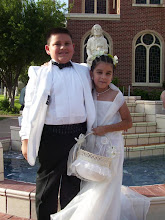
The Poet Slave of Cuba: A Biography of Juan Francisco Manzano by Margarita Engle
This book is about the life of Juan Francisco Manzano a slave from birth until the day he ran away as an adult. Hs life is depicted in verse and in different points of view. Juan was born to Maria, a slave, and they were both owned by Don Juan Manzano, a wealthy, slaveowner in Cuba. As a young child, he spent his time with Dona Beatriz, Don Juan Manzano's wife, and was told to call her Mama. Although he was denied an education, he learned how to create and recite poetry by memory. He was Dona Beatrize's pet and she was kind to him. At his baptism, Dona Beatriz promised him that once she died he was to be free. When Juan was eleven, Dona Beatriz passed away and he was denied his freedom. Instead he was sent to his godmother La Marquesa de Prado Ameno, a crazed woman that had no sympathy or love for Juan. Instead of seeing his true talent as a poet, she sees him more as a burden, and takes satisfaction in punishing him. His punishments were of the extreme: he was whipped, shackled, caged, and beaten. His mother tried to buy his freedom, but she was refused. He is was not allowed to flip through books, recite his poetry, or even hold a pencil. Juan had been denied all the things that make him who he is, a poet. Don Nicolas, La Marquesa's son, takes pity in him and tries to treat him kindly behind his mother's back. As an adult, Juan is seen as a healer and tries to help people with their ailments. La Marquesa won't have it and she wants him all to herself. After being tortured and close to his death, Juan runs away to finally be able to do the things he loves, recite and create poetry. I highly enjoyed and recommend this wonderful book to middle and upper grade students. Students can learn about the cruelties that have been brought onto slaves and the freedom that had been denied to them. Points of view, symbolism in the verses and illustrations, and the many aspects of slavery can all be taught within this book.
This book is about the life of Juan Francisco Manzano a slave from birth until the day he ran away as an adult. Hs life is depicted in verse and in different points of view. Juan was born to Maria, a slave, and they were both owned by Don Juan Manzano, a wealthy, slaveowner in Cuba. As a young child, he spent his time with Dona Beatriz, Don Juan Manzano's wife, and was told to call her Mama. Although he was denied an education, he learned how to create and recite poetry by memory. He was Dona Beatrize's pet and she was kind to him. At his baptism, Dona Beatriz promised him that once she died he was to be free. When Juan was eleven, Dona Beatriz passed away and he was denied his freedom. Instead he was sent to his godmother La Marquesa de Prado Ameno, a crazed woman that had no sympathy or love for Juan. Instead of seeing his true talent as a poet, she sees him more as a burden, and takes satisfaction in punishing him. His punishments were of the extreme: he was whipped, shackled, caged, and beaten. His mother tried to buy his freedom, but she was refused. He is was not allowed to flip through books, recite his poetry, or even hold a pencil. Juan had been denied all the things that make him who he is, a poet. Don Nicolas, La Marquesa's son, takes pity in him and tries to treat him kindly behind his mother's back. As an adult, Juan is seen as a healer and tries to help people with their ailments. La Marquesa won't have it and she wants him all to herself. After being tortured and close to his death, Juan runs away to finally be able to do the things he loves, recite and create poetry. I highly enjoyed and recommend this wonderful book to middle and upper grade students. Students can learn about the cruelties that have been brought onto slaves and the freedom that had been denied to them. Points of view, symbolism in the verses and illustrations, and the many aspects of slavery can all be taught within this book.

No comments:
Post a Comment